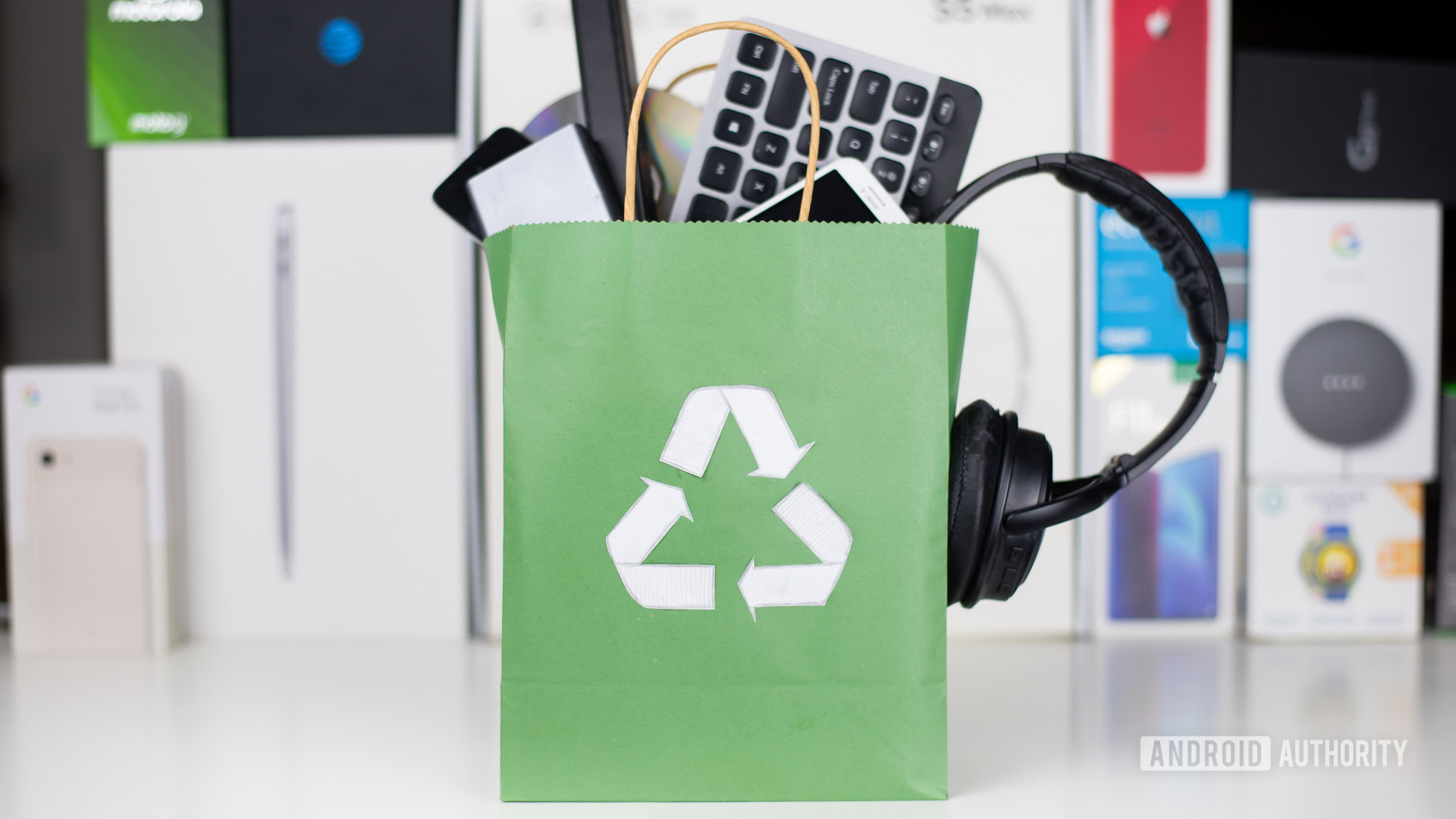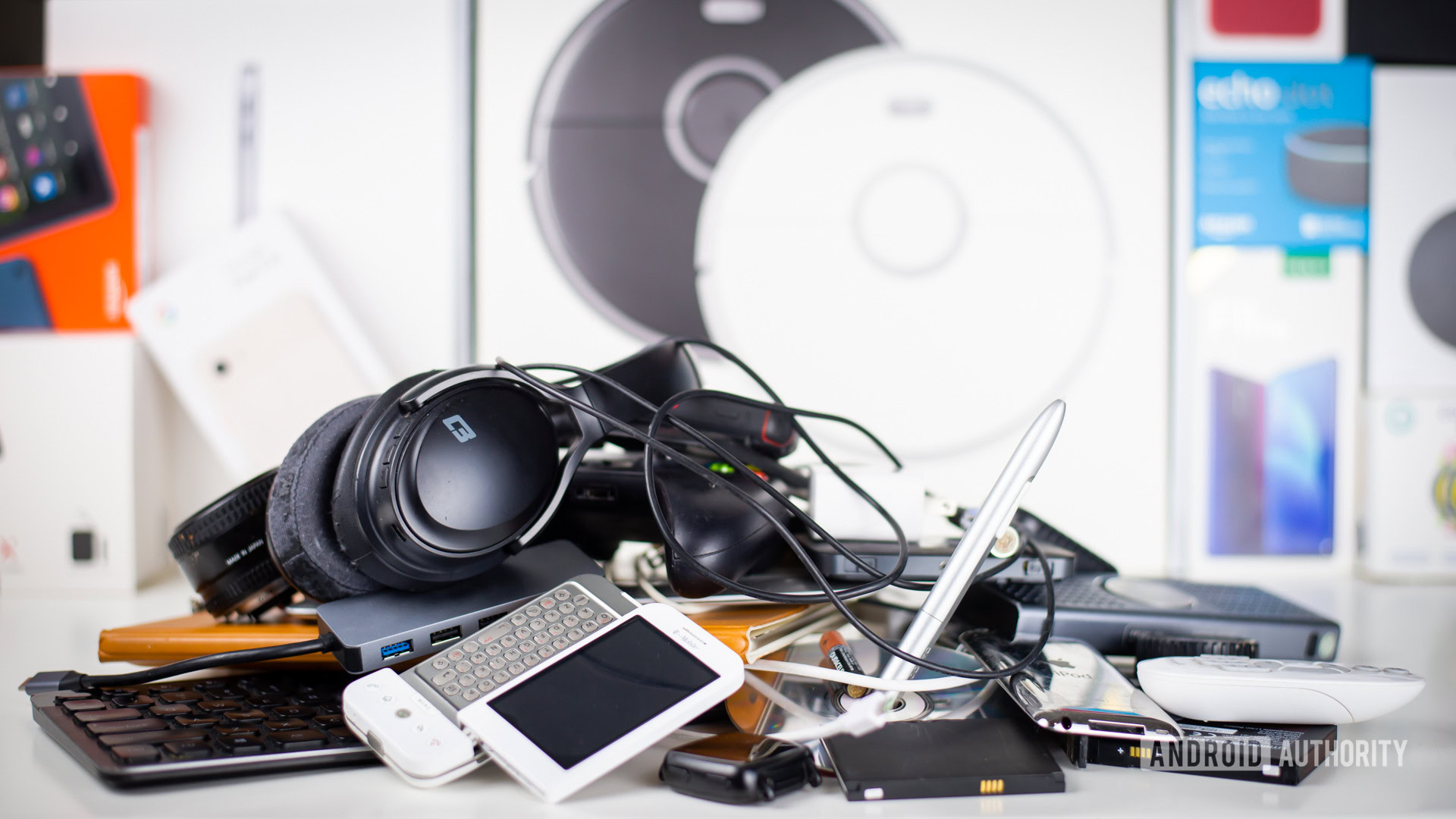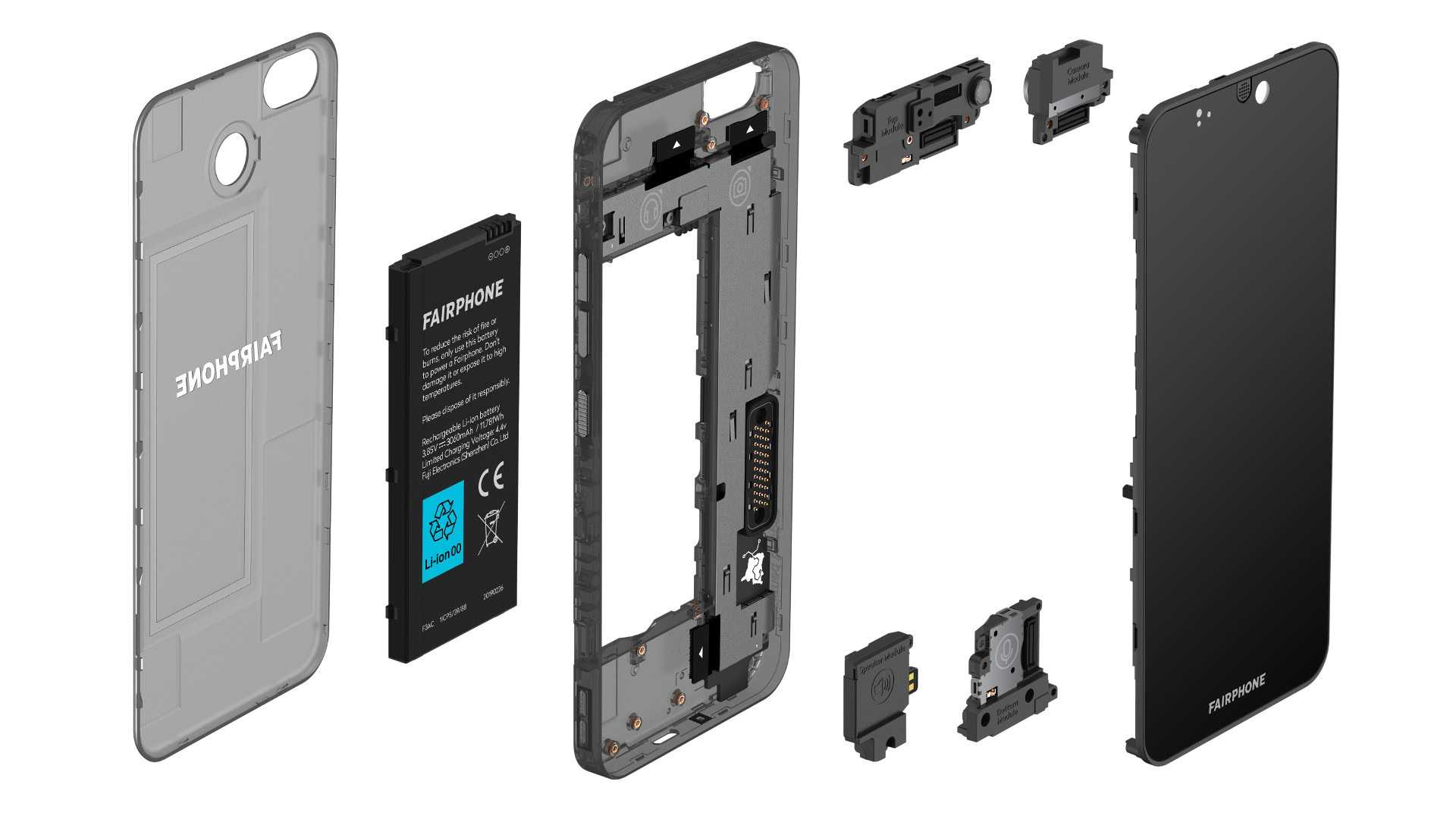Affiliate links on Android Authority may earn us a commission. Learn more.
To solve the smartphone e-waste problem we first need fewer disposable devices

Both Apple and Samsung are rumored to be selling their next flagships without a charger in the box. Whether a cost-saving measure or a true move towards sustainability, it raises the question: will it have any environmental impact?
With modern smartphones being as disposable as they currently are, it is hard to see how potentially removing Apple and Samsung chargers will make any significant dent in the mounting e-waste problem.
Samsung is certainly among the few smartphone makers that have made important steps towards sustainability. Last year, the South Korean manufacturer removed unnecessary plastic from its phone packaging, replacing it with paper and other sustainable materials.
More recently, it introduced its latest green chargers. According to the company, these Samsung chargers have already saved 13 million kilowatts of energy since 2014 with further improvements expected from the newer models. Now, the OEM might remove them completely, reducing unnecessary manufacturing.
These are all positive moves from the Android giant. However, when juxtaposed with the enormous amount of e-waste generated by the tech industry, the carbon footprint reduction derived from chargers and packaging seems insignificant.
Disposable smartphones and e-waste recycling

Electronic waste (or e-waste) is one of the biggest environmental problems we’re facing today. The term e-waste encompasses pretty much any device that uses a battery or electricity to function: from large household appliances like fridges and washing machines to smartphones, tablets, and wearables.
Estimates differ slightly, but according to most sources the world produces around 50 million metric tons of e-waste every year. Around 10% of the total is made up of small electronics like smartphones, and that percentage is expected to continue rising.
Although the price of flagships has increased significantly in recent years, there are now a lot more budget and mid-range offerings, which are just as disposable, if not more so. Planned obsolescence and limited or non-existent repairability exacerbate the problem.
See also: Right to repair: Should we tolerate hard-to-fix devices for better phones?
Samsung is no exception to this trend. Its devices often receive low repairability scores. Although it has improved its update track record in recent years, most of its devices stop receiving the latest Android version after just two or three years, flagships included.
The same applies to the majority of Android manufacturers. This limits the long-term appeal of phones not only for first-time buyers, but also on the second-hand market.
The resell appeal is especially important because the phones you trade-in for a discount on your new device will usually end up here. They are often refurbished and resold or donated. If second-hand buyers cannot easily replace batteries or make use of third-party repair shops, they’re not likely to hold on to the phone for very long either.
The problem is even more apparent with the latest trendy devices: foldable phones. Easier to damage and even harder to repair, they could be filling landfills even faster than their “non-foldable” counterparts if they see a wider mainstream adoption.
The problem with smartphone recycling

Only around 20% of e-waste is recycled globally. If not disposed of properly, devices with lithium-ion batteries such as smartphones pose a serious risk. There have been cases of battery fires burning down entire facilities.
Worse yet, smartphones contain a number of rare and valuable materials that end up in landfills along with them. Researchers at Plymouth University put smartphones through a blender and discovered that they contained on average 900mg of tungsten, 70mg of cobalt, 90mg of silver, 36 mg of gold, along with other rare materials.
While that might not seem like much on paper, they concluded that to create just one phone, 7kg of high-grade gold ore needed to be mined. This essentially means that non-renewable and hard to obtain materials are regularly discarded, while mining for new ore continues, often in conflict regions.
Almost 7% of the world’s gold may currently be discarded in e-waste.
Recycling seems like the obvious solution. We are already seeing the use of metals from recycled electronics. For a high-profile example, the Tokyo 2021 Olympic medals are made from gold, silver, and bronze derived from e-waste recycling.
However, the recycling industry is not without its problems either. A study by the Basel Action Network revealed that nearly 40% of US e-waste was exported illegally. Researchers placed radio tracking devices in a number of electronics that were sent to certified recycling facilities and then tracked their journey.
The vast majority of the gadgets ended up in developing countries, most of them in Asia. Once there, the e-waste was often processed in unsafe facilities or even outdoor scrap yards where workers were handling the devices without protective gear of any kind. In the process, they are exposed to mercury, nickel, and other toxic materials.
The EU’s recycling track record is not much better. A significant portion of its e-waste finds its way to developing nations in Africa, sometimes in places like Agbobloshie, the largest e-waste scrapyard in Ghana. There, monitors, old computers, and more are burned in the open air, releasing toxic fumes and leaking poison into the ground, sometimes even into the drinking water. This constant exposure results in serious health problems like lead poisoning, cancer, and birth defects in babies.
Modular phones and right to repair

So, is there a solution that can prevent all this harm and truly reduce smartphone e-waste? Many put the onus on consumers and say that we should simply buy fewer smartphones and other tech. While that is true, change needs to come from the top first.
If smartphones and tablets are hard to repair or are purposefully made obsolescent, there is little consumers can do. When repairing is more costly and time-consuming than buying a flashy new device, the choice for many is simple.
Modular phones like the Fairphone 3 are often posited as the solution. They come with easily replaceable parts, which make repairs seamless. The Fairphone 3 has six such replaceable modules, which include the display and the battery, but also the speaker and the camera.
Fairphone also goes to extreme lengths to offer long-term software support. The firm recently worked with the LineageOS team to bring Android 9 Pie to the almost five-year-old Fairphone 2, despite the fact that the processor inside was only officially supported up to Android 6.0 Marshmallow.
Read more: How long do chipmakers support their processors for Android updates?
Unfortunately, Fairphone is still a relatively unique and niche product. The brand is not the first to attempt modular design either. We have seen concepts like Moto Mods and the LG G5’s modules come and go without much fanfare. This makes such devices a risky investment for manufacturers whose only concern is profitability.
The only viable tool we currently have to combat disposability is the right to repair legislation. The European Commision has already put forward a right to repair initiative as part of its Circular Economy Action Plan. It aims to encourage eco-design and reuse, but also to make repairs such as smartphone battery and screen replacement easier.
A standard charger for all phones is part of the plan too, although the EU has tried and failed to implement it previously. Nevertheless, it is a better solution than Samsung and Apple chargers being removed from new phones and simply passing the cost and responsibility onto consumers.
See also: Hey Apple, now would be a great time to ditch Lightning and get with USB-C
The initiative has not addressed all concerns, however. The global right to repair movement wants OEMs to provide official replacement parts and repair manuals to third-party repair shops and customers. Software modification is an important part of the equation too.
Some right to repair activists argue that rooting, unlocking devices, and installing custom ROMs are necessary in the prevention of planned obsolescence. Tinkering is also seen as an essential part of ownership.
In the US, an important victory was won in 2018. You can now legally unlock and root a variety of home devices, including smartphones and smart home gadgets. Hardware repair is another matter, however.
Twenty states have introduced right to repair bills, but so far none have passed. Manufacturers like Apple often lobby against the bills, which should tell you plenty about their true intentions.
Nevertheless, this is why the right to repair legislation is so important. Manufacturers can switch to eco-friendly packaging and remove chargers, but without systemic change, these moves are little more than good PR, while e-waste continues to mount.